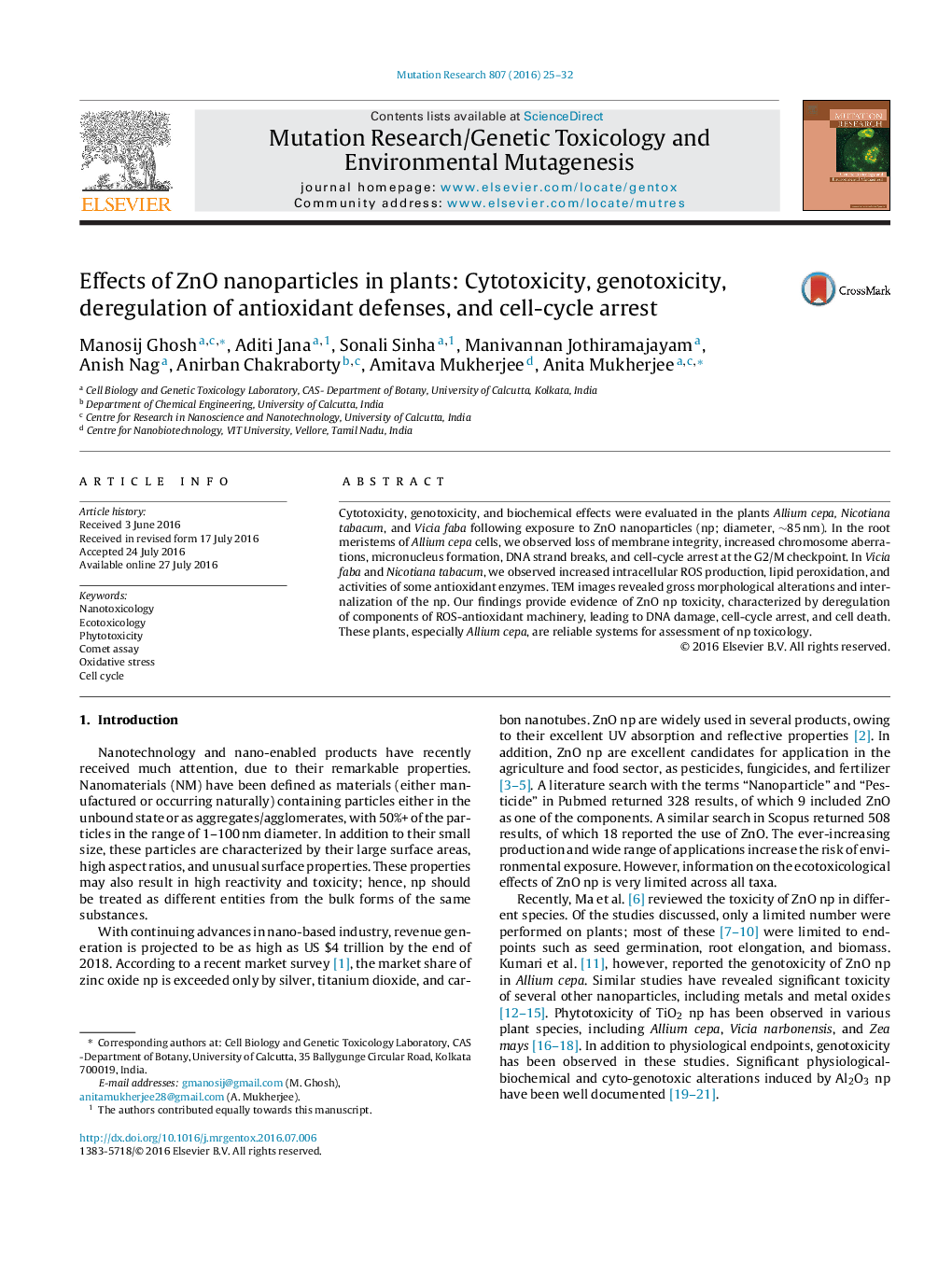| Article ID | Journal | Published Year | Pages | File Type |
|---|---|---|---|---|
| 2147815 | Mutation Research/Genetic Toxicology and Environmental Mutagenesis | 2016 | 8 Pages |
•ZnO-np treatment let to a decrease in MI, increase in CA and MN formation.•Increase in DNA fragmentation noted.•Accumulation of cells in G2/M phase, increase in sub G0 population.•ZnO-np induced oxidative stress response.•TEM images revealed alteration of cellular organization and nanoparticle uptake.
Cytotoxicity, genotoxicity, and biochemical effects were evaluated in the plants Allium cepa, Nicotiana tabacum, and Vicia faba following exposure to ZnO nanoparticles (np; diameter, ∼85 nm). In the root meristems of Allium cepa cells, we observed loss of membrane integrity, increased chromosome aberrations, micronucleus formation, DNA strand breaks, and cell-cycle arrest at the G2/M checkpoint. In Vicia faba and Nicotiana tabacum, we observed increased intracellular ROS production, lipid peroxidation, and activities of some antioxidant enzymes. TEM images revealed gross morphological alterations and internalization of the np. Our findings provide evidence of ZnO np toxicity, characterized by deregulation of components of ROS-antioxidant machinery, leading to DNA damage, cell-cycle arrest, and cell death. These plants, especially Allium cepa, are reliable systems for assessment of np toxicology.
Graphical abstractFigure optionsDownload full-size imageDownload as PowerPoint slide
